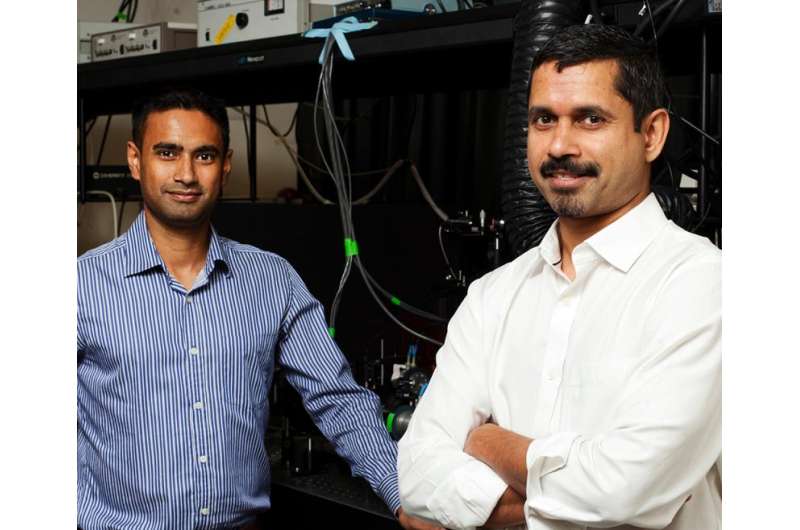Scientists study single 'transformer' proteins with role in cancer

A new study led by scientists at The Scripps Research Institute (TSRI) and St. Jude Children's Research Hospital shows how a protein involved in cancer twists and morphs into different structures.
"We're studying basic biophysics, but we believe the complexity and rules we uncover for the physics of protein disorder and folding could one day also be used for better designs of therapeutics," said TSRI Associate Professor Ashok Deniz, senior author of the new study along with Richard Kriwacki, faculty member at St. Jude.
The study, published recently in the journal Angewandte Chemie, focuses on a protein called nucleophosmin (NPM1). This protein has many functions and, when mutated, has been shown to interfere with cells' normal tumor suppressing ability. NPM1 has been implicated in cancers such as non-Hodgkin lymphoma and acute myelogenous leukemia.
Previous research led by study collaborators Kriwacki and Diana Mitrea at St. Jude had shown that a section of NPM1, called the N-terminal domain (Npm-N), doesn't have a defined, folded structure. Instead, the protein morphs between two forms: a one-subunit disordered monomer and a five-subunit folded pentamer.
Until now, the mechanism behind this transformation was unknown, but scientists believed this monomer-pentamer equilibrium could be important for the protein's location and functioning in the cell.
To shed light on how this transformation occurred, Deniz and his colleagues used an innovative combination of three techniques—single-molecule biophysics, fluorescence resonance energy transfer (FRET) and circular dichroism—which enabled them to study individual molecules and collections of molecules. Single-molecule methods are especially useful for such studies because they can uncover important information that remains hidden in conventional studies.
Remarkably, the researchers found that the transformation can proceed through more than one pathway. In one pathway, the transformation begins when the cell sends signals to attach phosphoryl groups to NPM1. This modification, called phosphorylation, prompts the ordered pentamer to become disordered and likely causes NPM1 to shuttle outside the cell's nucleus. A meeting with a binding partner can mediate the reverse transformation to a pentamer.
Interestingly, when NPM1 does become a pentamer again under these conditions, which likely causes it to move back to the nucleolus, it takes a different path instead of just retracing its earlier steps.
Priya Banerjee, an American Heart Association-supported postdoctoral research associate at TSRI and the first author of the study, compared these complicated transitions to the morphing of a "Transformers" toy, where a robot can become a car and then a jet. "Phosphorylation and partner-binding are like different cellular switches driving these changes," said Banerjee.
Banerjee said the new study also reveals many intermediate states between monomer and pentamer structures—and that these states can be manipulated or "tuned" by changing conditions such as salt levels, phosphorylation and partner binding, which may explain how cells regulate the protein's multiple functions. The researchers said future studies could shed more light on the biological functions of these different structures and how they might be used in future cancer therapies.
The researchers added that combining the three techniques used in this study, plus a novel protein-labeling technique for single-molecule fluorescence, could be a useful strategy for studying other unstructured, "intrinsically disordered proteins" (IDPs). IDPS are involved in a host of cellular functions, as well as neurodegenerative disease, heart disease, infectious disease, type 2 diabetes and other conditions.
More information: Priya R. Banerjee et al. Asymmetric Modulation of Protein Order-Disorder Transitions by Phosphorylation and Partner Binding, Angewandte Chemie International Edition (2015). DOI: 10.1002/anie.201507728
Journal information: Angewandte Chemie , Angewandte Chemie International Edition
Provided by The Scripps Research Institute




















